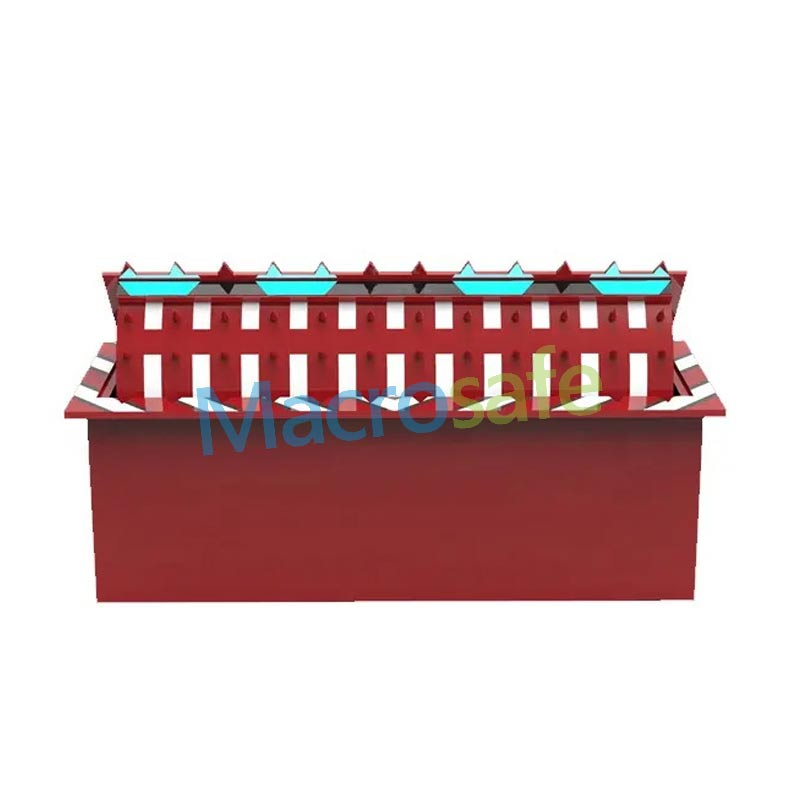Automatic road blockers play a crucial role in enhancing security and controlling vehicle access to restricted areas. However, their deployment and maintenance present unique challenges that need to be addressed effectively. This article explores the key challenges faced in the deployment and maintenance of automatic road blockers and discusses strategies to overcome these hurdles.
Complex Installation Process
The installation of automatic road blockers can be complex and time-consuming. It involves detailed planning, coordination with multiple stakeholders, and adherence to safety regulations. Challenges such as underground utility conflicts, site constraints, and environmental considerations can further complicate the installation process. To overcome these challenges, it is vital to engage experienced professionals who have expertise in road blocker installation. Conducting thorough site surveys, collaborating with utility companies, and obtaining necessary permits before installation can streamline the process and ensure successful deployment.
Integration with Existing Infrastructure
Integrating automatic road blockers with existing infrastructure is another significant challenge during deployment. Compatibility issues, particularly with access control systems, can arise, leading to delays and operational inefficiencies. To overcome this challenge, it is essential to conduct comprehensive compatibility tests and work closely with manufacturers to ensure seamless integration. Customization of road blockers and access control systems may be required to align with the specific infrastructure requirements.
System Reliability and Durability
Ensuring system reliability and durability is paramount in the deployment of automatic road blockers. These systems must consistently perform their intended functions without disruptions or failures. Challenges such as wear and tear, extreme weather conditions, and attempted tampering or vandalism can impact system reliability. Employing high-quality materials, rigorous testing, and adherence to industry standards during the manufacturing process can improve the reliability and durability of road blocker systems. Regular maintenance, including inspections and component replacements, should also be conducted to address any potential issues and ensure continuous system reliability.
Training and Expertise
Proper training and expertise are crucial for the effective deployment and maintenance of automatic road blockers. Challenges emerge when staff members responsible for operating and maintaining the systems lack the necessary knowledge and training. It is essential to provide comprehensive training to operators, maintenance personnel, and security staff to ensure they understand the system’s operation, troubleshooting techniques, and safety protocols. Regular refresher training sessions and access to technical support can further enhance staff competence and proficiency in handling road blockers.
Cost Considerations
The cost of deploying and maintaining automatic road blockers can be a significant challenge for organizations. The initial capital outlay for installation and the ongoing maintenance expenses must be carefully managed. To overcome this challenge, organizations can consider long-term cost-effective solutions. Conducting detailed cost-benefit analyses, exploring leasing options, and engaging with reputable manufacturers and service providers will help optimize on-going costs. Additionally, proactive maintenance practices and the use of component monitoring systems can prevent costly breakdowns and prolong the life of the road blocker systems.
Regulatory Compliance
Adhering to regulatory requirements presents a challenge when deploying and maintaining automatic road blockers. Different jurisdictions may have specific regulations regarding safety standards, environmental considerations, and installation practices. To overcome this challenge, it is essential to stay updated on relevant regulations and work closely with local authorities during the planning and deployment stages. Engaging with experts and consultants who have knowledge of the local regulatory landscape can ensure compliance and facilitate the smooth operation of road blocker systems.
Conclusion
Deploying and maintaining automatic road blockers come with various challenges. By addressing complex installation processes, ensuring seamless integration, prioritizing system reliability, providing adequate training and expertise, managing cost considerations, complying with regulations, these challenges can be overcome. Successful deployment and a proactive maintenance approach will ensure the consistent and reliable performance of road blocker systems while enhancing security and controlling vehicular access effectively. Organizations must partner with experienced manufacturers and service providers who can offer comprehensive solutions and support throughout the process.














